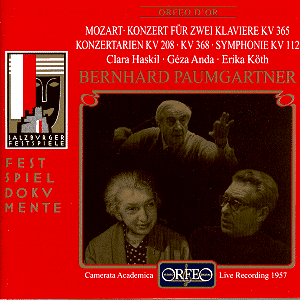 Composer: Luis Gianneo
Composer: Luis Gianneo
Works: Piano Sonata No. 2 (1943), Suite (1933), Piano Sonata No. 3 (1957), Sonatina (1938), Six Bagatelles (1957/9), Improvisation (1948)
Performers: Dora De Marinis (piano), Alejandro Cremaschi (piano), Fernando Viani (piano)
Recording: Schloss Gottesauer, Velte Saal, Karlsruhe, August 2000
Label: Marco Polo
Luis Gianneo, an Argentinian composer of Italian descent, occupies a somewhat obscure yet vital niche within the 20th-century musical landscape. His output, while eclipsed by contemporaries such as Alberto Ginastera, remains rich in rhythmic vitality and folk-inspired elements. The collection presented here—a testament to Gianneo’s creative evolution—offers a cross-section of his stylistic journey, from the vibrant folk rhythms of the early works to the more introspective and complex textures of his later compositions.
The recording opens with the Piano Sonata No. 2, a substantial work that showcases Gianneo’s deft contrapuntal skills and his integration of traditional forms with local rhythmic elements. Here, performer Dora De Marinis delivers a nuanced interpretation, capturing the sonata’s energetic spirit while maintaining clarity in the intricate passages. The second movement’s lyrical themes, imbued with a sense of yearning, are particularly well-articulated, highlighting Gianneo’s ability to blend folk inspiration with a broader harmonic language reminiscent of Prokofiev and Bartók.
The Suite of 1933 marks Gianneo’s early exploration of fusion between folk styles and more cosmopolitan idioms. Alejandro Cremaschi’s performance reveals the work’s colorful contrasts and rhythmic exuberance, particularly in the lively outer sections. The careful attention to dynamic shading and articulation breathes life into Gianneo’s lively motifs, underscoring the work’s vibrant, dance-like quality that is both engaging and technically demanding.
Transitioning to the Sonatina (1938), the interpretation leans towards a neoclassical aesthetic, with a clarity and economy that reflect Gianneo’s mature style. Here, Cremaschi excels in navigating the work’s traditional forms while infusing it with the folkloric essence that defines much of Gianneo’s output. The balance between thematic development and rhythmic drive is expertly maintained, ensuring that the work’s brevity does not sacrifice depth.
The Piano Sonata No. 3 (1957) presents a stark contrast, embodying a more troubled and austere character, likely a reflection of Gianneo’s personal experiences and the socio-political landscape of Argentina at the time. Fernando Viani’s interpretation captures this emotional complexity, navigating the work’s darker passages with a sensitivity that transforms the performance into a profound exploration of loss and turmoil. The use of folk material, while still present, becomes a vehicle for deeper expression, suggesting a shift in Gianneo’s compositional focus toward a more introspective and less overtly nationalistic language.
The collection’s closing pieces, the Six Bagatelles, reveal Gianneo’s later approach to musical economy and atonality. The strict two-part writing in these works, as performed by Viani, emphasizes the clarity of counterpoint while allowing for a colorful palette of sounds. Each bagatelle, succinct yet rich, showcases Gianneo’s inventive use of the piano, making a compelling case for his place in the canon of 20th-century music.
The sound quality of this recording is commendable, with a warm and natural piano tone that allows for the subtle intricacies of Gianneo’s writing to emerge. The engineering strikes a fine balance, ensuring that each performer’s contributions are distinct yet cohesively integrated within the overall soundscape.
Gianneo’s music, as presented in this collection, warrants greater recognition and study. The performers’ dedication and insight into the composer’s idiom breathe life into these works, making a persuasive case for Gianneo’s artistic significance. His ability to weave folk elements into a modernist framework not only presages the work of Ginastera but also enriches the broader narrative of South American classical music. The sonic journey through Gianneo’s works is an invitation to reconsider and re-assess the richness of his contribution to the piano repertoire.



